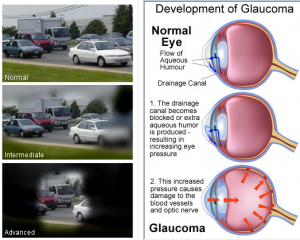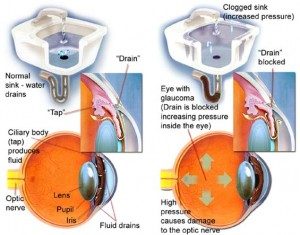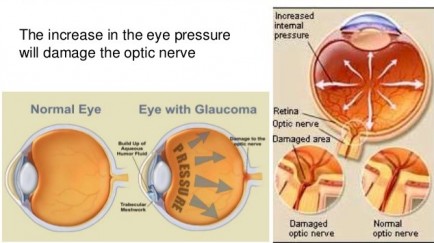 Glaucoma is sometimes called the “silent thief of sight” because it slowly damages the eyes and can cause irreparable harm before there is any vision loss. Glaucoma is a condition that causes damage to your eye’s optic nerve and gets worse over time. It’s often associated with a buildup of pressure inside the eye. Glaucoma tends to be inherited and may not show up until later in life.
Glaucoma is sometimes called the “silent thief of sight” because it slowly damages the eyes and can cause irreparable harm before there is any vision loss. Glaucoma is a condition that causes damage to your eye’s optic nerve and gets worse over time. It’s often associated with a buildup of pressure inside the eye. Glaucoma tends to be inherited and may not show up until later in life.
What Are The Types of Glaucoma
There are two main types of glaucoma:
- Open-angle glaucoma. Also called wide-angle glaucoma, this is the most common type of glaucoma. The structures of the eye appear normal, but fluid in the eye does not flow properly through the drain of the eye, called the trabecular meshwork.
- Angle-closure glaucoma. Also called acute or chronic angle-closure or narrow-angle glaucoma, this type of glaucoma is less common in the West than in Asia. Poor drainage is caused because the angle between the iris and the cornea is too narrow and is physically blocked by the iris. This condition leads to a sudden buildup of pressure in the eye.
Who Gets Glaucoma
 You are at an increased risk of glaucoma if you:
You are at an increased risk of glaucoma if you:
- Are of African-American, Irish, Russian, Japanese, Hispanic, Inuit, or Scandinavian descent
- Are over age 40
- Have a family history of glaucoma
- Have poor vision
- Have diabetes
- Take certain steroid medications, such as prednisone
- Have had trauma to the eye or eyes
What Are The Symptoms of Glaucoma
 If you have any of the following symptoms, seek immediate medical care:
If you have any of the following symptoms, seek immediate medical care:
- Seeing halos around lights
- Vision loss
- Redness in the eye
- Eye that looks hazy (particularly in infants)
- Nausea or vomiting
- Pain in the eye
- Narrowing of vision (tunnel vision)
